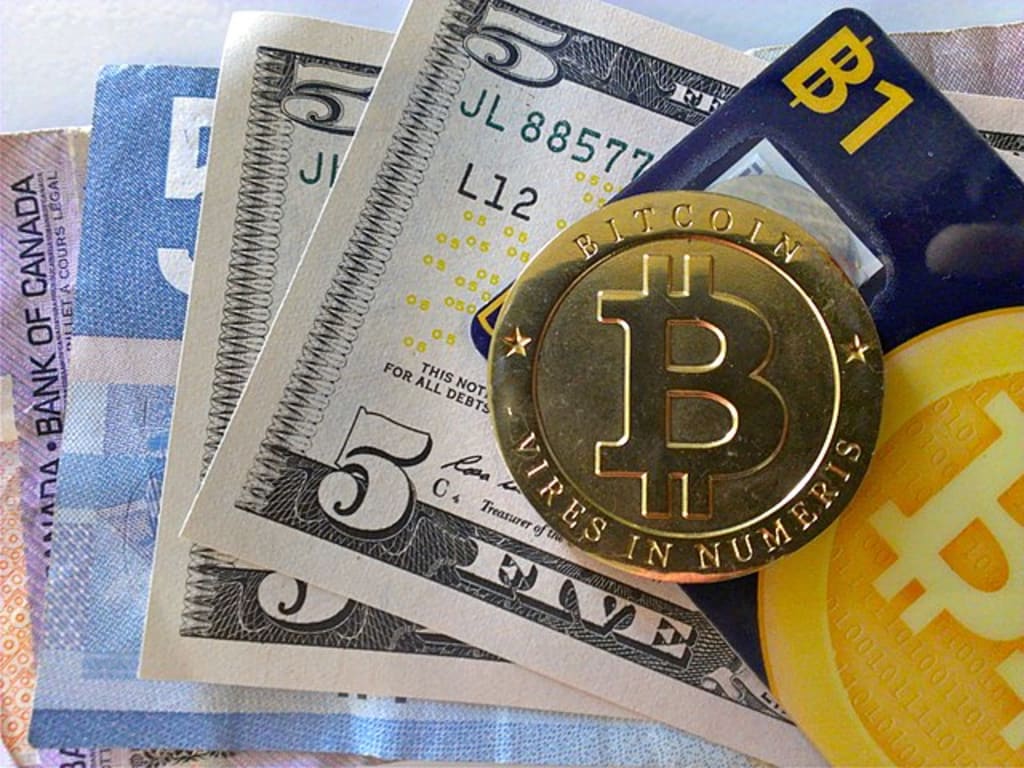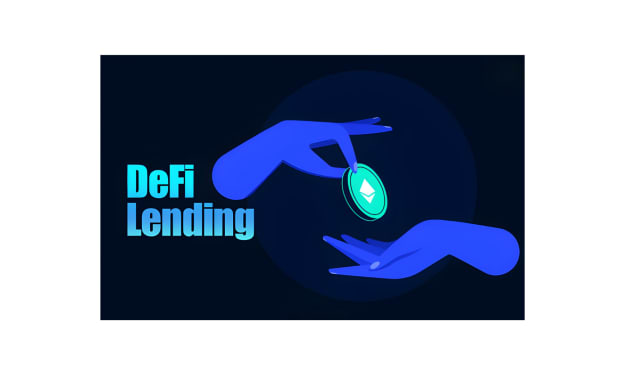DeFi .. is Set To Be The Profiteering Way That Cryptocurrencies Will Be Used
We use many different services today, besides sending money to each other. Finances, savings plans, insurance, and the stock market are all built around money, and all work together to make up our economy.

Our economy and services are now set up in a way that makes sense. Banks, insurance corporations, stock markets, and other financial institutions all have someone in charge, whether a person or a company. This person or company is in charge of regulating and using these solutions. This central economic system, or CeFi, has problems, such as fraud, corruption, and bad management.
What if, similar to how Bitcoin decentralized currency, we could decentralize the financial system?
Along the same lines as other cryptocurrencies already in existence, DeFi wants to do away with the need for third-party facilitators such as banks and brokers. This viewpoint is what’s driving the market in today’s day and age.
Bitcoin was created in 2009 as an alternative to traditional forms of money (including financial authorities such as banks and stockbrokers), but it still has a long way to go before it can totally replace traditional forms of finance.
Despite Bitcoin’s initial intention, the network of new central authorities that is required for it to function is very similar to the institutions that it was supposed to replace. This is because Bitcoin was designed to function as a decentralized digital currency.
Miners, node operators, wallet providers, and exchanges are examples of authorities that are increasingly functioning in ways that are similar to traditional financial institutions.
Because of this, it can no longer be said that Bitcoin is as decentralized as it advertises itself to be.
A properly decentralized system should only have the personnel responsible for its operation. Bitcoin has made some hints in this direction, but it has not yet been able to completely fulfill this promise.
The protocols of DeFi are governed by computer programs that are claimed to be immune to corruption, however the network does not have a governing body.
Due to the fact that the open financial network is decentralized and does not rely on a central authority, numerous individuals have chosen to place their financial resources within it.
DeFi: What is it?
DeFi is a term for financial services that don’t have a main leader or person in charge. Using decentralized money like certain cryptocurrencies, which can also be set up for automated tasks, we can build exchanges, lending facilities, insurance companies, and other businesses that don’t belong to anyone and aren’t controlled by anyone.
The first thing we need for a decentralized financial system is an infrastructure for running programs and decentralized services. In our “What is Ethereum?” video, we go into a lot of detail about Ethereum. Still, for now, we’ll say that with Ethereum, we can write automated code called “smart agreements” that can handle any financial service we want in a decentralized way.
This implies that we define the guidelines that will undoubtedly govern how a certain solution will operate. Also, once we put those rules on the Ethereum network, we can’t change them anymore because they are set in stone. Once we have a way to make decentralized apps like Ethereum, we can start building our decentralized economy. Now, let’s look at some of the building blocks that make it up.
Secure Money
Money is the first thing that any economic system needs. Why not use Ethereum’s currency, ether, or bitcoin instead? Even though Bitcoin is decentralized, it can only be programmed in the most basic way, and it is not compatible with the Ethereum system. Ether, however, can be programmed and is also good. Still, it is a very unstable situation.
We’ll want a more substantial stable currency to function inside this system if we want to establish trustworthy economic services that people will want to use. Stablecoins can be used in this case. Stablecoins are tied to the value of something in the real world, like a major currency like the US dollar. In our video “What are stablecoins?” we go into more detail about how stablecoins are made and the different types of stablecoin fixes.
For DeFi, we’ll want to use a stablecoin that doesn’t use fiat money reserves to keep a peg since this will require a leader. Here is where DAI comes in. DAI is a decentralized cryptocurrency backed by the value of the US dollar. This means that one DAI is worth one US dollar.
DAI’s value is secured by crypto collaterals that are visible to everyone on the Ethereum blockchain, in contrast to other well-known stablecoins whose value is only backed by US Dollar gains. DAI is over-collateralized, which means that if you put up $1 worth of Ether as a deposit, you can get 66 cents worth of DAI. Pay back the DAI you got as soon as you want your Ether back, and the Ether will be sent out into the world.
You can buy DAI on an exchange if you don’t have any Ether to use as collateral. Since DAI is over-collateralized, even if the price of Ether becomes very volatile, the value of the secured Ether backing the DAI in circulation will probably stay at 100% or more.
The DAI stablecoin is, in essence, a smart contract that runs on the Ethereum platform. This makes DAI a trustless and decentralized stablecoin that can’t be shut down or censored. So, it is a great way to get money for other DeFi solutions.
Financial Operators
It’s time to come up with more solutions now that our decentralized commercial strategy has reliable decentralized money. The first use case we’ll discuss is the DEX, which stands for “decentralized exchange.” DEXes work based on rules, or “smart agreements,” that let people buy, sell, or trade cryptocurrencies.
Like DAI, they stay on the Ethereum platform, which means they work without being given permission first. When you exchange on a DEX, there is no middleman, no need to sign up, no need to prove your identity, and no cost to withdraw. Instead, the policies, trades, and safe management of funds are made by smart contracts.
In contrast to a centralized exchange, you usually don’t have to put money into an exchange account before you make a trade. This takes away a big risk that all centralized exchanges face: they could be hacked.
But this is not the end of the different kinds of decentralized financial solutions. Let’s move on to decentralized cash markets, which connect people who owe money to people who have money to lend. The substance is a decentralized application (dapp) for borrowing and lending based on Ethereum. This means you can lend out your crypto and earn interest.
You might need money to pay your rent or buy groceries, but all you have is cryptocurrency. You can use your crypto as collateral and borrow against it if that’s the case.
The Compound system distributes the interest rate, ties loan suppliers and borrowers together, and enforces financing terms automatically. The process of building up interest in cryptocurrencies has become very popular recently. This has given rise to the term “generate farming,” which refers to putting crypto properties to work while trying to make as much money as possible.
Decentralized insurance is another type of service that can be a DeFi service. We’ll talk about the risks of these new financial products soon, so why not do a service that guarantees my money if something goes wrong? Well, how about a decentralized system connecting people who agree to pay for insurance with those who agree to insure them for costs? Everything happens independently, with no insurance company or agent in the middle.
Bottom line
The DeFi transformation seems to have reached the early adopter stage. The next few years will tell if it makes it across the gorge and into the mainstream. Undoubtedly, a decentralized financial system could help many people with trouble with discriminatory practices, high fees, and the inability to handle their money well.
About the Creator
Estalontech
Estalontech is an Indie publisher with over 400 Book titles on Amazon KDP. Being a Publisher , it is normal for us to co author and brainstorm on interesting contents for this publication which we will like to share on this platform
Enjoyed the story? Support the Creator.
Subscribe for free to receive all their stories in your feed. You could also pledge your support or give them a one-off tip, letting them know you appreciate their work.






Comments
There are no comments for this story
Be the first to respond and start the conversation.